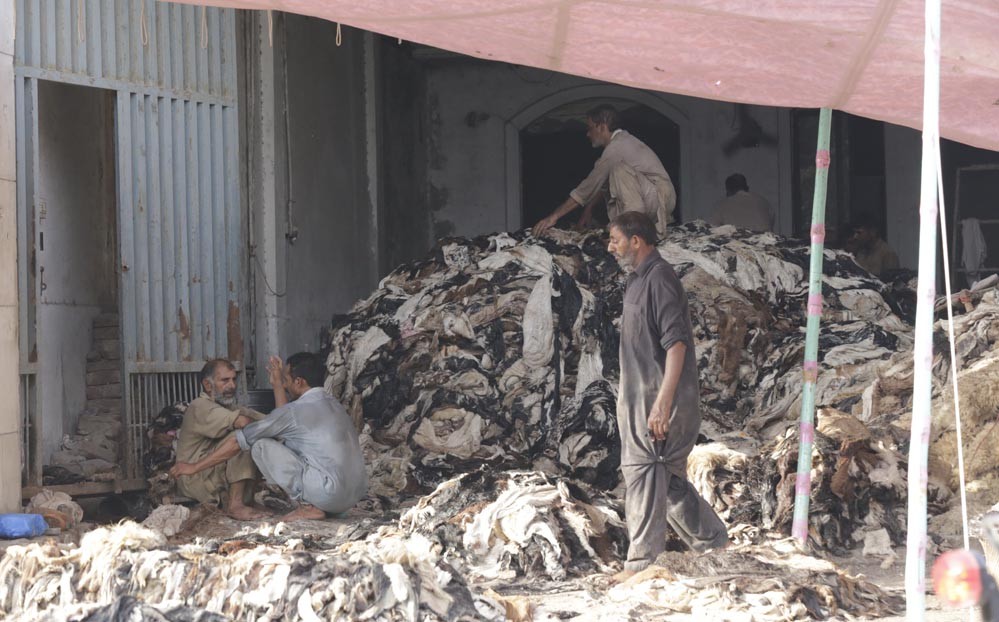
Steep fall in prices of sacrificial animal hides’ means all is not well with the country’s leather industry

The sale of slaughtered animals’ hides is the prime economic activity during the three days of Eidul Azha. The leather industry procures around 40 per cent of its raw material around this time whereas charity organisations including trust hospitals, orphanages etc raise funds to carry out their welfare activities during the year.
This year also, the leading hide markets of the country received huge supplies of hides of sacrificial animals from different areas. The buyers who mostly comprised tannery owners made their purchases but at rates much lower than that prevailed last year. For example, the price of cow hide came down to Rs1200 to Rs1400 from last year’s range of Rs1600 to Rs1800, goat skin between Rs150 to Rs200 from Rs225 to Rs250 last year and sheep skin to Rs75 to Rs100 from last year’s Rs125-150.
The prices of hides have come down over the last few years and are decreasing by the day. There was a time, between 2010 and 2012, when the price of cow hide was between Rs3000 and Rs3500 and that of goat was Rs500-600. There are different reasons quoted for this price fall by different quarters.
The hide collectors blame tanners and their representatives for forming a cartel and buying hides that are perishable commodity at the price of their choice. On the other hand, tanners complain leather goods prices have come down in the international market affecting their profitability and that they are short of funds to buy new stocks. One reason for this funds shortage, they explain, is that the government has withheld their tax refunds for long and put them in a difficult situation.
This situation calls for a review of the performance of the leather industry and the reasons why its raw material prices are falling so fast. Whenever this happens, there is an assumption that the sector is not performing well and the resulting reduced demand for raw material has brought down the pieces.
If we look at the figures of July 2018, we find leather exports fall by 21 per cent in terms of value to $18.45 million from $23.47 million in July 2017. While in terms of volume the exports increased by 26 per cent over this period. This means though the volume increased, the earnings decreased and a plausible reason for this is that exporters got lower prices for their products.
Mian Tahir, a purchase manager at a tannery in Kasur, says the world is fast shifting to artificial leather which costs half the price of genuine leather. People who would buy pure leather products are now shifting to artificial leather products which, he says, has led to a fall in the former’s demand. "As Pakistan’s strength has been export of genuine leather products, it has suffered due to this trend."
Secondly, he says, global fashion is changing fast and Pakistani leather industry is unable to keep pace with it. "Unfortunately, in the absence of quality fashion designers and due to the industry’s habit of copying international designs, there is very few original stuff that Pakistan can sell at premium price."
In words of Amanullah Aftab, Chairman Pakistan Tanners Association (PTA) Central, the absence of level playing field when pitched against regional competitors has also affected the country’s leather exports and industry. He says the sector has the potential of exporting goods worth around $1 billion which can be increased with improvement in quality and diversification.
Industry sources say Pakistan’s regional competitors like India, Bangladesh, China and Thailand have an edge over the country due to their pro-industry policies. They say customers have shifted from Pakistan to India and Bangladesh because both these countries are giving 10 to 12 per cent export incentives to their exporters. Due to these incentives, these countries can pass on price benefits to buyers and attract them.
Furthermore, high regulatory duties, customs duties, sales tax etc imposed on import of raw material and local taxes and levies affect the viability of the industry.
Muhammad Imran, a shoe-manufacturer and exporter based in Lahore, believes the industry shall go for diversification and value-addition if it wants to multiply its earnings and earn foreign exchange for the country. He says a lot of potential exists in the field of leather footwear export because Pakistan has one of the best raw materials available locally.
He says a major issue is that the footwear industry lacks modern machinery and trained workforce to operate it. "There is a dearth of footwear designers as well which increased dependence on copied designs," he adds. Imran complains there are very few vocational training centres in the country that train workforce for the footwear sector. Due to this, he says, "the industry has to depend on the workforce trained through traditional methods and compete with countries having better trained workers with a professional approach."